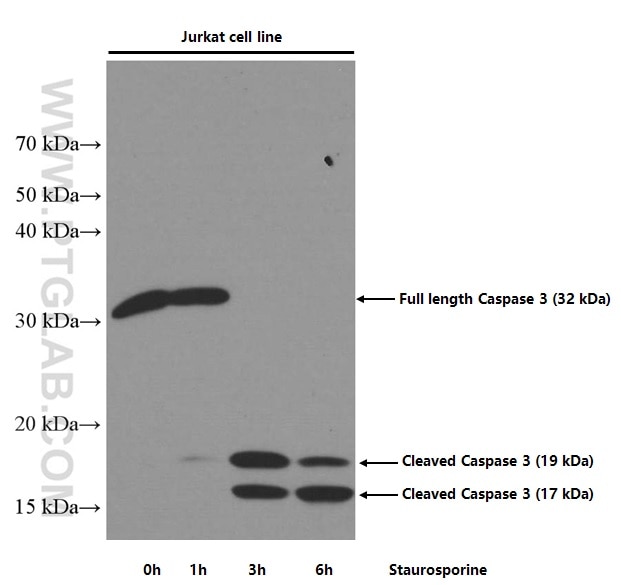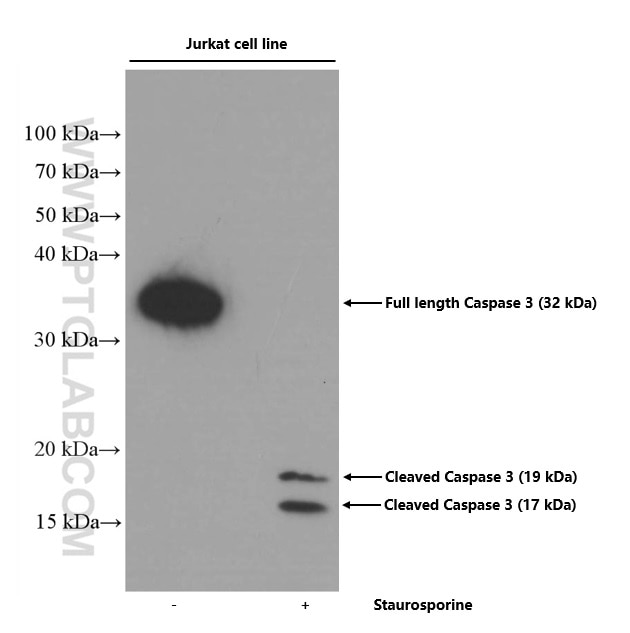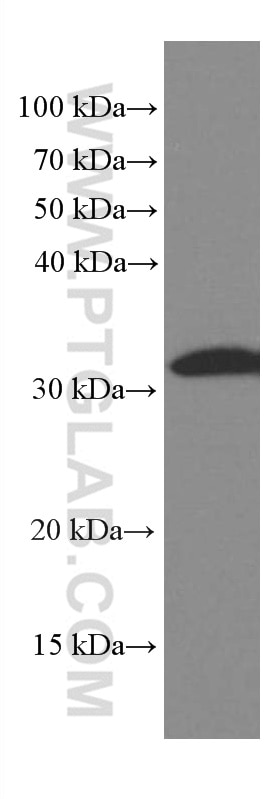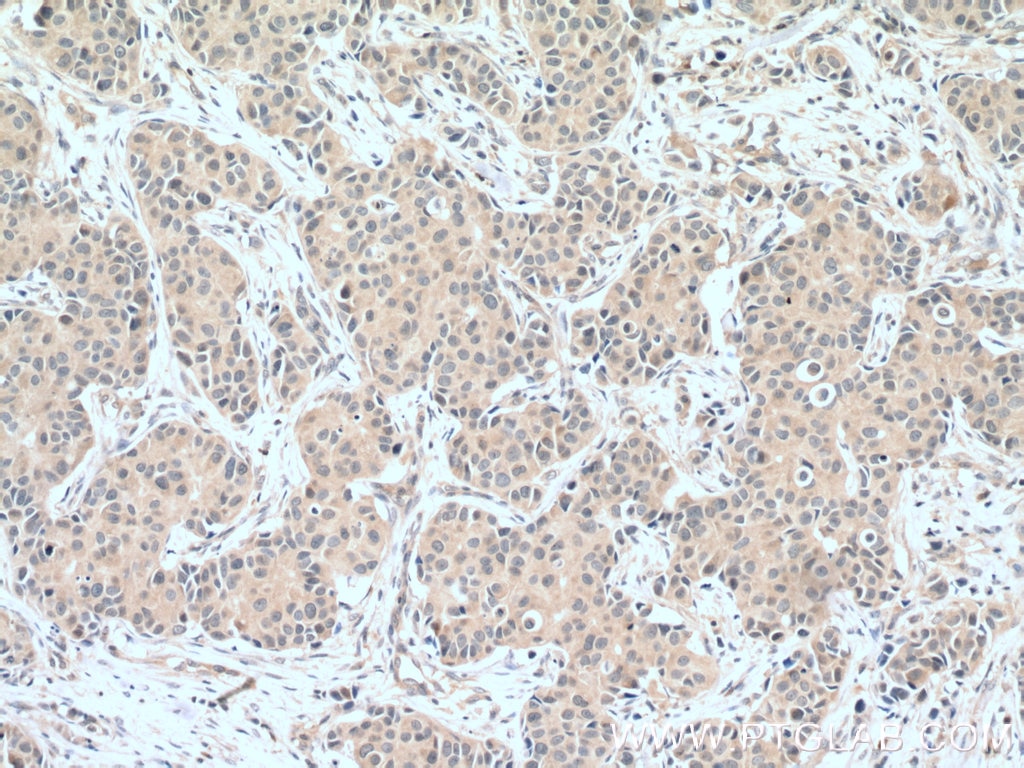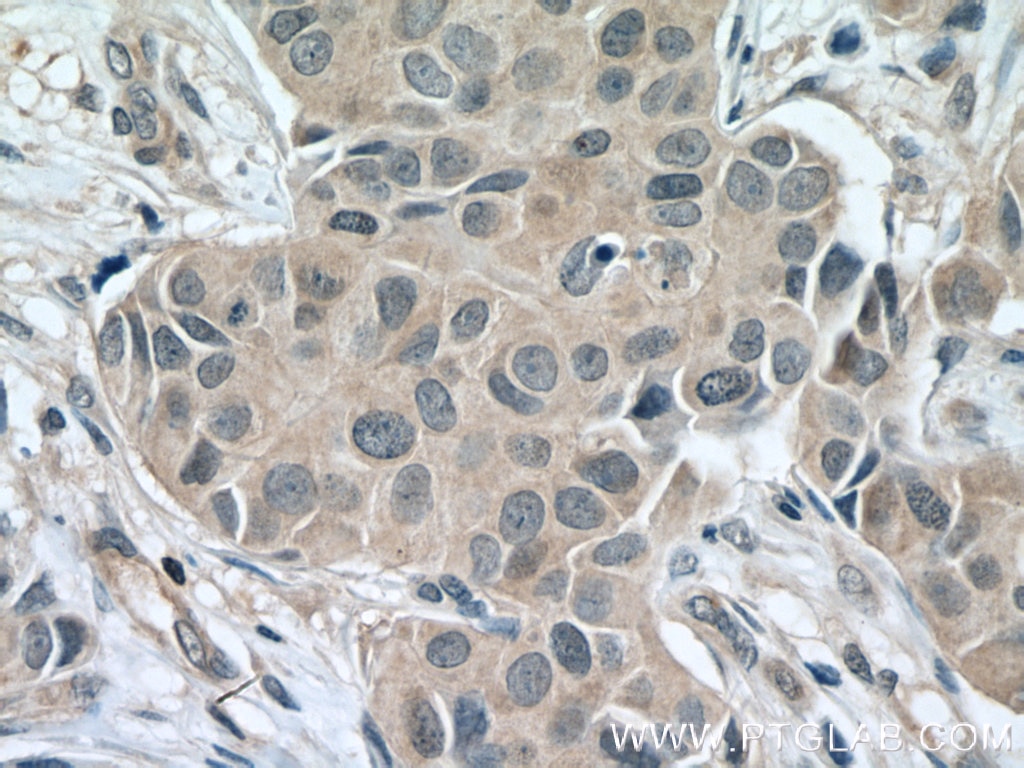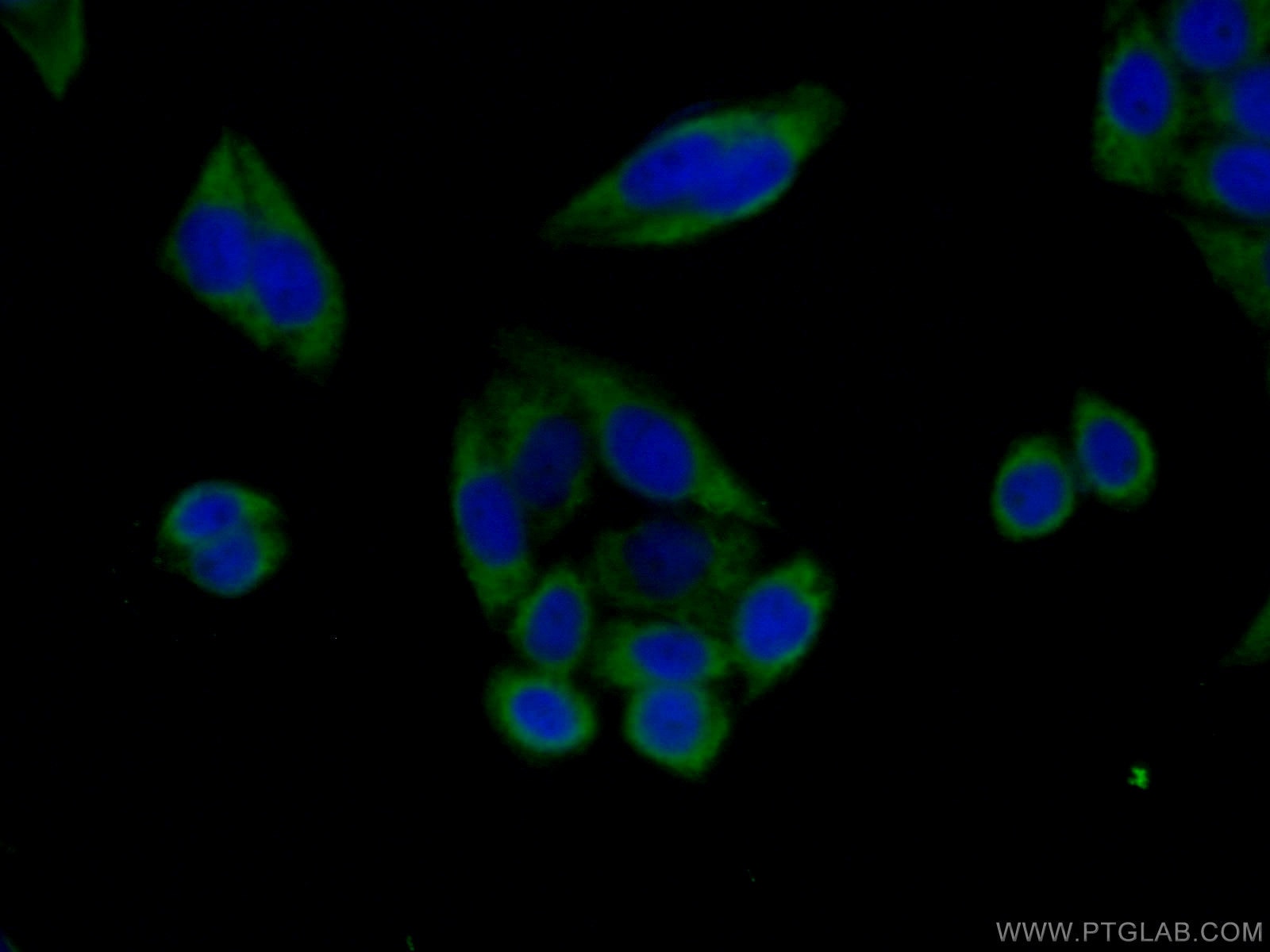Caspase 3(human specific) Monoklonaler Antikörper
Caspase 3(human specific) Monoklonal Antikörper für WB, IF, IHC, ELISA
Wirt / Isotyp
Maus / IgG2b
Getestete Reaktivität
human und mehr (5)
Anwendung
WB, IHC, IF/ICC, ELISA
Konjugation
Unkonjugiert
CloneNo.
1E7F9
Kat-Nr. : 66470-1-Ig
Synonyme
Geprüfte Anwendungen
| Erfolgreiche Detektion in WB | Jurkat-Zellen, HEK-293-Zellen |
| Erfolgreiche Detektion in IHC | humanes Mammakarzinomgewebe Hinweis: Antigendemaskierung mit TE-Puffer pH 9,0 empfohlen. (*) Wahlweise kann die Antigendemaskierung auch mit Citratpuffer pH 6,0 erfolgen. |
| Erfolgreiche Detektion in IF/ICC | HeLa-Zellen |
Empfohlene Verdünnung
| Anwendung | Verdünnung |
|---|---|
| Western Blot (WB) | WB : 1:500-1:2000 |
| Immunhistochemie (IHC) | IHC : 1:100-1:400 |
| Immunfluoreszenz (IF)/ICC | IF/ICC : 1:50-1:500 |
| It is recommended that this reagent should be titrated in each testing system to obtain optimal results. | |
| Sample-dependent, check data in validation data gallery | |
Veröffentlichte Anwendungen
| WB | See 69 publications below |
| IHC | See 2 publications below |
| IF | See 5 publications below |
Produktinformation
66470-1-Ig bindet in WB, IHC, IF/ICC, ELISA Caspase 3(human specific) und zeigt Reaktivität mit human
| Getestete Reaktivität | human |
| In Publikationen genannte Reaktivität | human, Hausschwein, Maus, Ratte, Zebrafisch, Kuh |
| Wirt / Isotyp | Maus / IgG2b |
| Klonalität | Monoklonal |
| Typ | Antikörper |
| Immunogen | Caspase 3(human specific) fusion protein Ag25029 |
| Vollständiger Name | caspase 3, apoptosis-related cysteine peptidase |
| Berechnetes Molekulargewicht | 277 aa, 32 kDa |
| Beobachtetes Molekulargewicht | 32-35 kDa, 19 kDa, 17 kDa |
| GenBank-Zugangsnummer | BC016926 |
| Gene symbol | Caspase 3 |
| Gene ID (NCBI) | 836 |
| Konjugation | Unkonjugiert |
| Form | Liquid |
| Reinigungsmethode | Protein-A-Reinigung |
| Lagerungspuffer | PBS with 0.02% sodium azide and 50% glycerol |
| Lagerungsbedingungen | Bei -20°C lagern. Nach dem Versand ein Jahr lang stabil Aliquotieren ist bei -20oC Lagerung nicht notwendig. 20ul Größen enthalten 0,1% BSA. |
Hintergrundinformationen
Casp3 (caspase 3), also named as CPP32, SCA-1 and Apopain, belongs to the peptidase C14A family. Caspase 3 is involved in the activation cascade of caspases responsible for apoptosis execution. At the onset of apoptosis it proteolytically cleaves poly(ADP-ribose) polymerase (PARP) at a '216-Asp-|-Gly-217' bond. Caspase 3 cleaves and activates sterol regulatory element binding proteins (SREBPs) between the basic helix-loop-helix leucine zipper domain and the membrane attachment domain. Cleaves and activates caspase-6, -7 and -9. CASP3 is involved in the cleavage of huntingtin. This antibody is specific for human caspase 3, it can recognize the 32 kDa pro-caspase 3 as well as 17 and 19 kDa cleaved-caspase 3.
Protokolle
| PRODUKTSPEZIFISCHE PROTOKOLLE | |
|---|---|
| WB protocol for Caspase 3(human specific) antibody 66470-1-Ig | Protokoll herunterladen |
| IHC protocol for Caspase 3(human specific) antibody 66470-1-Ig | Protokoll herunterladenl |
| IF protocol for Caspase 3(human specific) antibody 66470-1-Ig | Protokoll herunterladen |
| STANDARD-PROTOKOLLE | |
|---|---|
| Klicken Sie hier, um unsere Standardprotokolle anzuzeigen |
Publikationen
| Species | Application | Title |
|---|---|---|
Sci Adv The deacetylation-phosphorylation regulation of SIRT2-SMC1A axis as a mechanism of antimitotic catastrophe in early tumorigenesis. | ||
Redox Biol Restoration of L-OPA1 alleviates acute ischemic stroke injury in rats via inhibiting neuronal apoptosis and preserving mitochondrial function. | ||
Environ Int Chemical conjugation of FITC to track silica nanoparticles in vivo and in vitro: An emerging method to assess the reproductive toxicity of industrial nanomaterials. | ||
Cancer Lett UM-6 induces autophagy and apoptosis via the Hippo-YAP signaling pathway in cervical cancer. | ||
Oxid Med Cell Longev Gastrodin Promotes the Survival of Random-Pattern Skin Flaps via Autophagy Flux Stimulation. | ||
Oxid Med Cell Longev Farrerol Enhances Nrf2-Mediated Defense Mechanisms against Hydrogen Peroxide-Induced Oxidative Damage in Human Retinal Pigment Epithelial Cells by Activating Akt and MAPK. |
